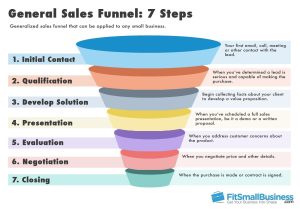
In today’s highly competitive tech industry, it is crucial for businesses to continuously strive for improvement and ensure customer satisfaction. One effective strategy to achieve this is through the use of customer surveys. By gathering valuable feedback directly from your target audience, you can gain insights into their preferences, expectations, and areas for improvement, enabling you to make data-driven decisions that boost your business. In this article, we will explore the importance of customer surveys and provide practical tips on how to implement them effectively.
1. Setting Clear Objectives
Before diving into conducting customer surveys, it is essential to identify clear objectives. Determine what specific aspects of your business you want to improve or gain insights into. This could include product features, customer support, website usability, or overall customer experience. By defining objectives at the onset, you can create targeted survey questions that elicit the necessary information.
2. Crafting Engaging Survey Questions
When designing your survey questions, keep in mind that simplicity and clarity are key. Use a mix of multiple-choice, rating scales, and open-ended questions to capture diverse feedback. Prioritize closed-ended questions to ease data analysis, while leaving room for customers to provide detailed insights through open-ended questions. Ensure that your questions are easy to understand, concise, and free of bias to encourage higher response rates.
3. Choosing the Right Survey Distribution Channels
Determining the appropriate distribution channels for your customer surveys is vital. Consider leveraging multiple platforms such as email, social media, company website, or mobile applications to reach a wider audience. Each channel offers different advantages; emails allow for personalized communication, while social media extends your reach. Optimize your approach by selecting the channels that align with your target audience’s preferences and behaviors.
4. Offering Incentives to Boost Response Rates
To encourage higher participation and engagement, consider offering incentives to your customers. This could be in the form of exclusive discounts, free trials, or entries into a contest. Incentives not only increase response rates but also demonstrate your appreciation for your customers’ time and input.
5. Analyzing and Acting on Survey Data
Once the survey responses start pouring in, it is crucial to analyze the data collected to gain valuable insights. Utilize data visualization tools, such as charts or graphs, to identify trends and patterns easily. Look for common themes and prioritize areas for improvement based on customer feedback. By summarizing the results and sharing them with your team, you can collectively brainstorm ideas, implement necessary changes, and track progress over time.
6. Actively Seeking Follow-up Feedback
Customer surveys should be viewed as an ongoing process rather than a one-time event. Encourage customers to provide additional feedback after implementing improvements to assess their effectiveness. Periodically conduct follow-up surveys to gauge satisfaction levels and identify any new areas for enhancement. This continuous feedback loop demonstrates your commitment to customer-centricity and fosters loyalty among your customer base.
Conclusion
Customer surveys offer invaluable insights into your business’s strengths and areas for improvement. By setting clear objectives, crafting engaging questions, choosing the right distribution channels, offering incentives, and actively analyzing survey data, you can leverage customer feedback to enhance your business operations, products, and services. Remember, customer surveys are an ongoing process, so continue to seek feedback and adapt accordingly. By making data-driven decisions, your business will position itself for success in the competitive tech industry.

